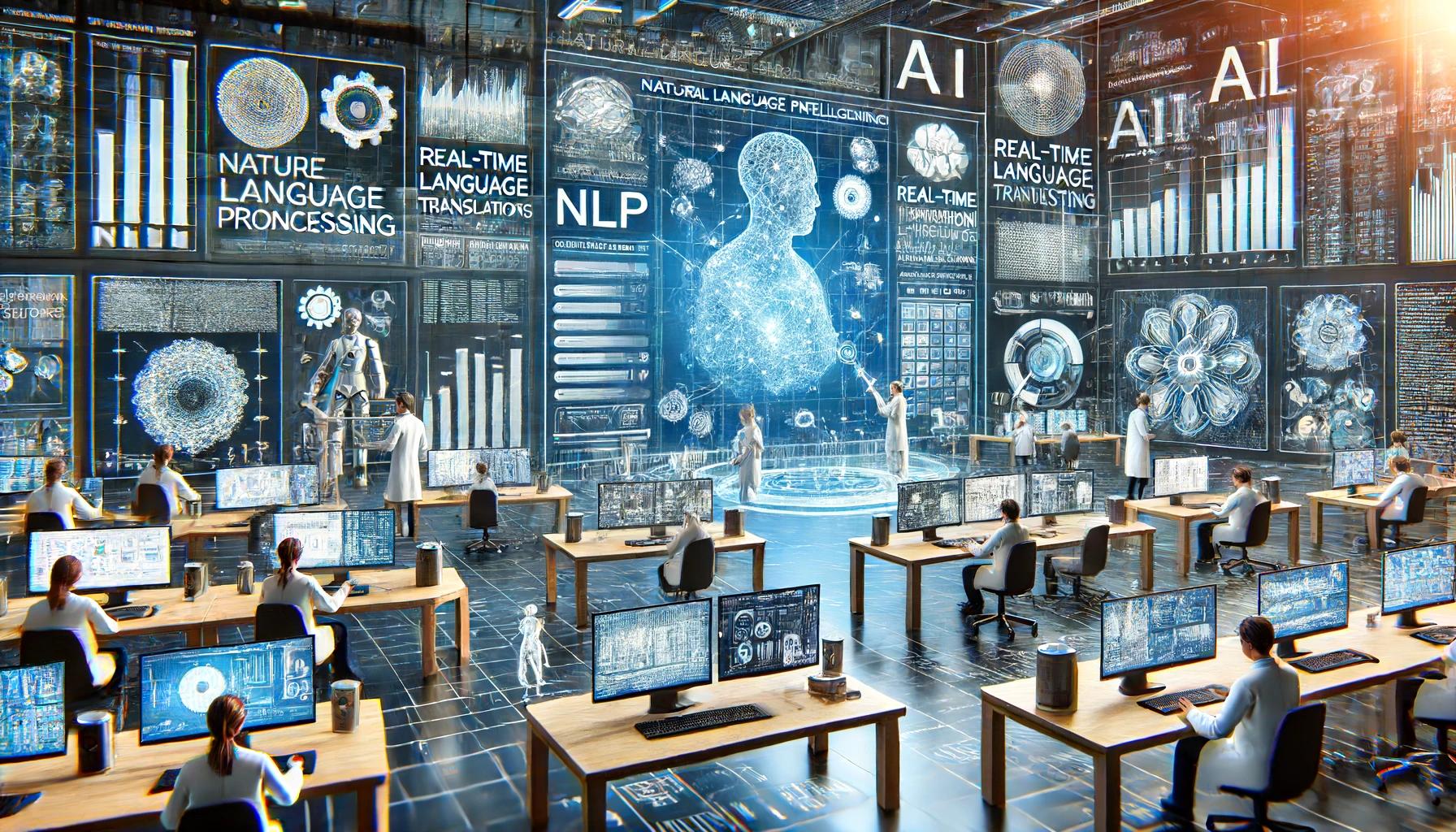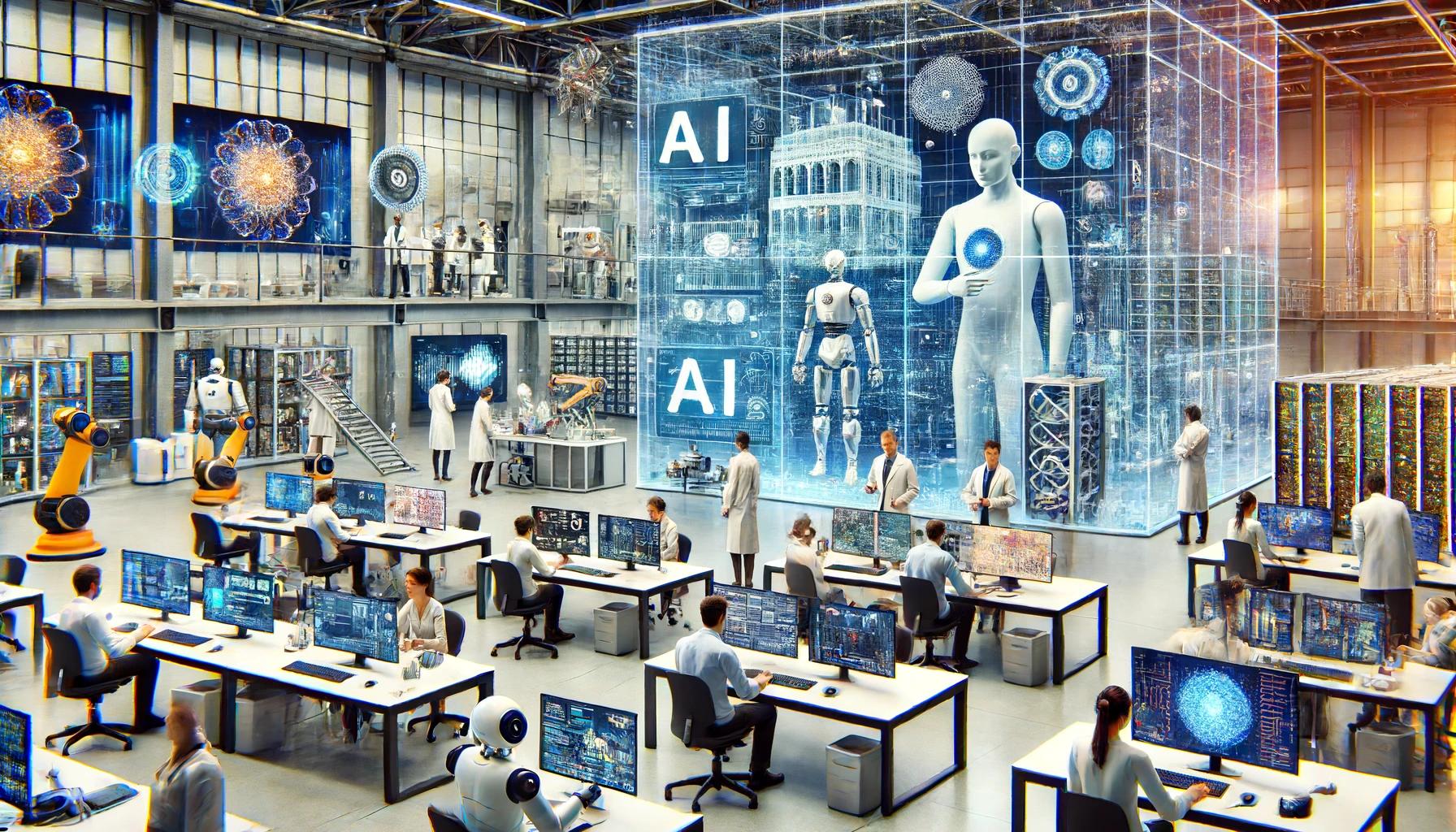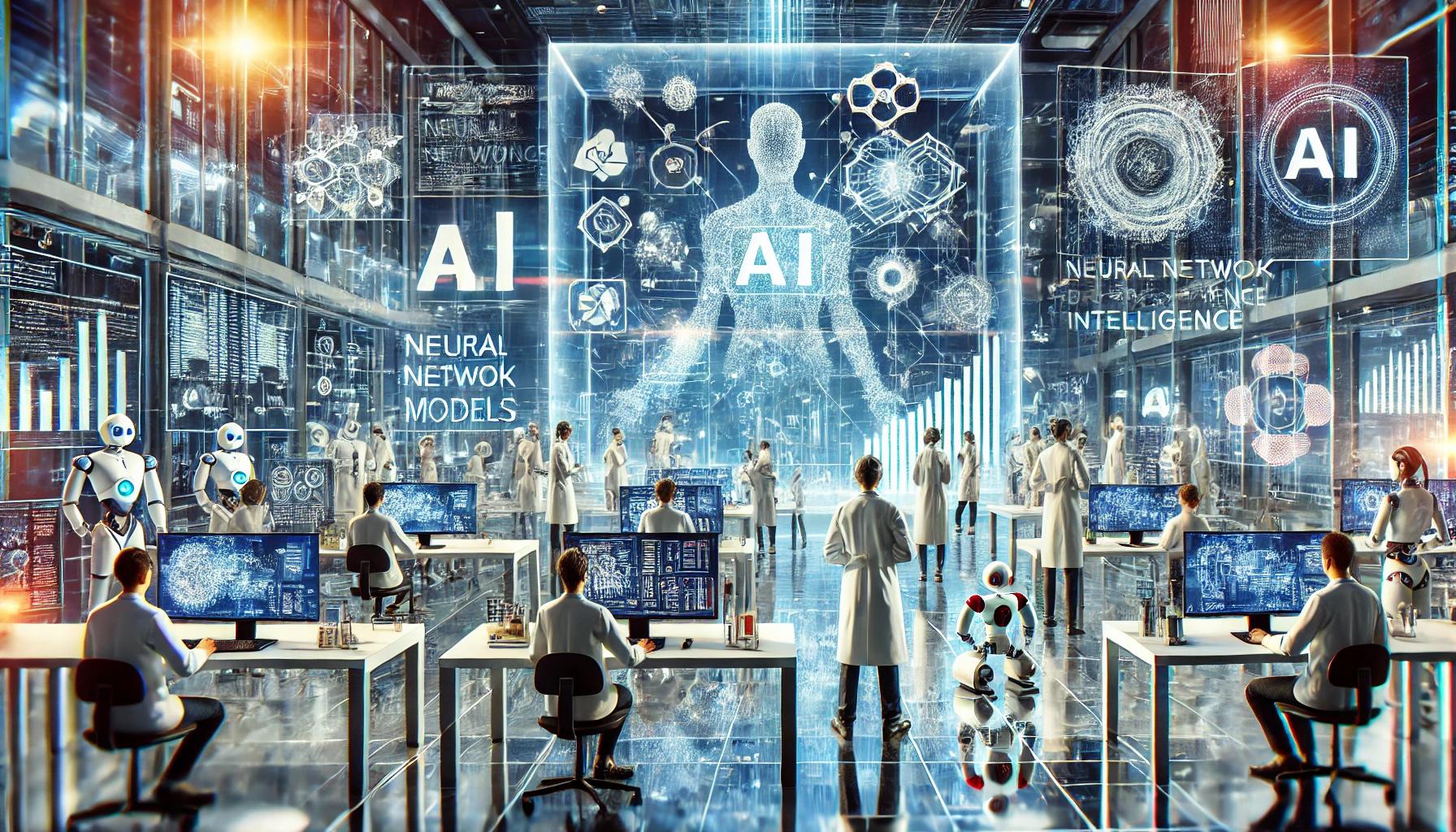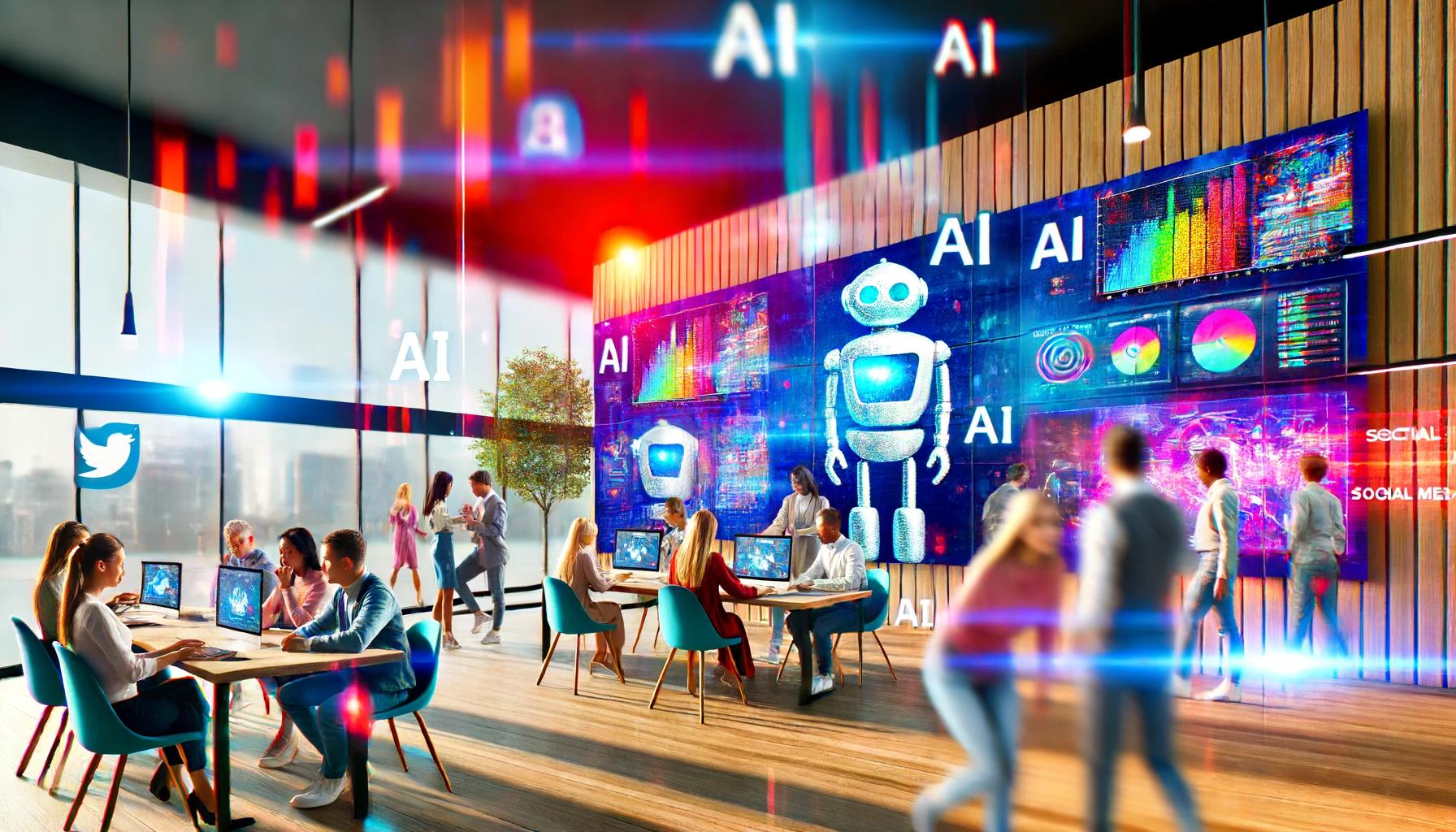- Overview of the Rapid Evolution of AI Technology
- Importance of Content Creation in the Digital Age
- Brief Mention of AI’s Role in Transforming Various Industries
- The Role of AI in Content Creation
- Definition and Scope of AI in Content Creation
- Examples of AI Tools Used for Writing, Editing, and Publishing
- Benefits of Using AI in Content Creation
- Types of AI-Powered Content Creation Tools
- Natural Language Processing (NLP) and Its Applications
- AI-Based Writing Assistants (e.g., GPT-4, Jasper)
- AI Tools for Graphic Design and Multimedia Content (e.g., Canva, Adobe Sensei)
- Case Studies: Success Stories of AI in Content Creation
- Examples of Companies Successfully Using AI for Content Creation
- Impact on Productivity and Creativity
- User Testimonials and Industry Feedback
- Ethical Considerations and Challenges
- Potential Ethical Issues (e.g., Plagiarism, Authenticity)
- Balancing AI-Generated Content with Human Creativity
- Addressing Biases in AI-Generated Content
- Future Trends in AI Content Creation
- Predictions for the Next 5-10 Years
- Emerging Technologies and Their Potential Impact
- The Evolving Role of Human Content Creators Alongside AI
- Conclusion
- Recap of the Transformative Impact of AI on Content Creation
- Final Thoughts on the Future Synergy Between AI and Human Creators
- Call to Action for Embracing AI in the Content Creation Process
Overview of the Rapid Evolution of AI Technology
Artificial Intelligence (AI) has seen an unprecedented growth trajectory over the past decade. From its early days of basic algorithms and limited applications, AI has now advanced to complex machine learning models and deep learning techniques that power a wide range of applications. Innovations such as Natural Language Processing (NLP) and computer vision have significantly enhanced AI’s capabilities, enabling machines to understand and generate human-like text, recognize images, and even drive cars. This rapid evolution is largely due to increased computational power, vast amounts of data, and significant investments in AI research and development (AI’s Evolution, Advancements in AI).
Importance of Content Creation in the Digital Age
In today’s digital age, content creation is more important than ever. The internet has become the primary platform for information dissemination, entertainment, and communication. High-quality content is crucial for engaging audiences, building brand identity, and driving traffic to websites. With the rise of social media, blogs, and online marketing, the demand for compelling and diverse content has skyrocketed. Businesses and individuals alike are striving to produce content that stands out in a crowded digital landscape, making content creation a vital skill and industry (Importance of Digital Content, Digital Age Content Creation).
Brief Mention of AI’s Role in Transforming Various Industries
AI is not only revolutionizing content creation but also transforming numerous other industries. In healthcare, AI is being used to analyze medical images, predict patient outcomes, and assist in surgeries. In finance, AI algorithms help detect fraud, manage investments, and provide personalized banking services. The retail industry leverages AI for inventory management, customer service, and personalized shopping experiences. Even in agriculture, AI-driven tools are optimizing crop yields and monitoring environmental conditions. The integration of AI across these sectors demonstrates its versatility and potential to drive efficiency, innovation, and growth.
The Role of AI in Content Creation
Definition and Scope of AI in Content Creation
AI in content creation refers to the use of advanced algorithms and machine learning techniques to assist or automate the production of digital content. This encompasses a wide range of activities, including generating written text, editing documents, creating visuals, and optimizing content for various platforms. AI can understand context, learn from data, and produce human-like text, making it an invaluable tool for content creators. The scope of AI in this field continues to expand as technology advances, offering new possibilities for creativity and efficiency.
Examples of AI Tools Used for Writing, Editing, and Publishing
There are several AI-powered tools available that are transforming how content is created, edited, and published:
- GPT-4: A language model developed by OpenAI that can generate coherent and contextually relevant text based on prompts.
- Jasper: An AI writing assistant that helps generate content for blogs, social media, and marketing materials.
- Grammarly: An AI tool that provides grammar and style suggestions to improve the quality of writing.
- Adobe Sensei: An AI platform that enhances creative workflows by automating repetitive tasks and providing intelligent recommendations for graphic design and multimedia projects.
- Canva: An online design tool that leverages AI to simplify graphic design, making it accessible to users without extensive design experience (AI Tools for Content Creation).
Benefits of Using AI in Content Creation
Using AI in content creation offers numerous benefits, including:
- Speed: AI can generate content much faster than humans, allowing creators to meet tight deadlines and produce more content in less time.
- Efficiency: Automating repetitive tasks such as editing, formatting, and keyword optimization saves time and reduces the workload for content creators.
- Personalization: AI can analyze user data to create personalized content that resonates with specific audiences, improving engagement and effectiveness.
- Consistency: AI ensures a consistent tone and style across all content, maintaining brand identity and quality.
- Innovation: AI tools can inspire new ideas and approaches to content creation, pushing the boundaries of what is possible (Benefits of AI in Content Creation).
Types of AI-Powered Content Creation Tools
Natural Language Processing (NLP) and Its Applications
Natural Language Processing (NLP) is a branch of artificial intelligence that focuses on the interaction between computers and humans through natural language. NLP enables machines to understand, interpret, and generate human language in a way that is both meaningful and useful. Applications of NLP in content creation include:
- Text Generation: Creating written content automatically, such as articles, blogs, and social media posts.
- Text Analysis: Analyzing large volumes of text to extract insights, summarize information, and identify trends.
- Language Translation: Providing accurate translations between different languages, making content accessible to a global audience.
- Sentiment Analysis: Understanding the emotional tone of a piece of text, which can be used to gauge audience reactions and tailor content accordingly (NLP Applications).
AI-Based Writing Assistants (e.g., GPT-4, Jasper)
AI-based writing assistants leverage advanced algorithms to assist in the writing process, making it more efficient and effective. Some notable examples include:
- GPT-4: Developed by OpenAI, GPT-4 is a powerful language model capable of generating coherent and contextually relevant text based on given prompts. It can be used for writing articles, creating marketing content, and even crafting poetry.
- Jasper: An AI writing assistant designed to help content creators generate high-quality content quickly. Jasper can assist with blog posts, social media content, email campaigns, and more, providing suggestions and even drafting entire pieces of content (AI Writing Assistants).
AI Tools for Graphic Design and Multimedia Content (e.g., Canva, Adobe Sensei)
AI is also making significant strides in the realm of graphic design and multimedia content creation. Tools powered by AI are enabling even those without extensive design skills to create professional-quality visuals. Examples include:
- Canva: An online design tool that uses AI to simplify the graphic design process. Canva offers a wide range of templates and design elements that users can customize with ease. AI features include design suggestions and automated layout adjustments.
- Adobe Sensei: Adobe’s AI and machine learning platform that enhances creative workflows. Adobe Sensei automates repetitive tasks, provides intelligent recommendations, and helps optimize designs. It is integrated into various Adobe Creative Cloud applications, such as Photoshop and Illustrator, making advanced design capabilities accessible to users (AI Tools for Design).
Case Studies: Success Stories of AI in Content Creation
Examples of Companies Successfully Using AI for Content Creation
Several companies have effectively integrated AI into their content creation processes, leading to impressive results:
- The Washington Post: The media company has developed an AI-powered bot called Heliograf, which automatically generates news reports on various topics, including sports, politics, and financial news. Heliograf has enabled The Washington Post to produce a higher volume of articles, especially for events requiring quick updates, such as the Olympics and elections (Washington Post’s AI).
- HubSpot: This marketing and sales software company uses AI to optimize content marketing strategies. HubSpot’s AI tools analyze data to provide insights on content performance and suggest improvements, helping marketers create more engaging and effective content (HubSpot’s AI).
- Alibaba: The e-commerce giant employs an AI copywriting tool that can generate product descriptions in a matter of seconds. This tool has significantly streamlined the content creation process, allowing Alibaba to efficiently manage its vast product catalog (Alibaba’s AI).
Impact on Productivity and Creativity
The adoption of AI in content creation has had a profound impact on both productivity and creativity:
- Productivity: AI tools automate time-consuming tasks such as editing, formatting, and keyword optimization. This automation frees up content creators to focus on more strategic and creative aspects of their work. For example, The Washington Post’s Heliograf has allowed journalists to cover more stories and provide timely updates without sacrificing quality.
- Creativity: AI enhances creativity by providing new tools and perspectives. It can generate ideas, offer stylistic suggestions, and even create original content. AI-powered platforms like Canva and Adobe Sensei provide designers with intelligent recommendations and automation features, enabling them to experiment with new styles and techniques while maintaining high standards of design.
User Testimonials and Industry Feedback
The positive impact of AI on content creation is echoed in user testimonials and industry feedback:
- Journalists at The Washington Post have reported that Heliograf has been instrumental in covering stories that would otherwise go unreported due to time constraints. The AI bot has also ensured accuracy and consistency in reporting.
- Marketers using HubSpot’s AI tools have noted a significant improvement in their content’s performance metrics. The AI-driven insights have helped them understand their audience better and tailor their content to meet specific needs, resulting in higher engagement and conversion rates.
- Alibaba’s product description tool has received praise for its efficiency and effectiveness. Sellers on Alibaba have expressed satisfaction with the quality of the AI-generated descriptions, which have helped improve their product listings and attract more customers.
These success stories highlight the transformative potential of AI in content creation, demonstrating how it can enhance productivity, foster creativity, and deliver tangible benefits to businesses and individuals alike (Success Stories in AI).
Ethical Considerations and Challenges
Potential Ethical Issues (e.g., Plagiarism, Authenticity)
The integration of AI in content creation brings several ethical concerns that need to be addressed:
- Plagiarism: AI-generated content can sometimes closely mimic existing works, leading to potential plagiarism issues. Ensuring that AI tools generate original content is crucial to maintaining intellectual property rights and academic integrity.
- Authenticity: The authenticity of AI-generated content can be questioned, as it may lack the personal touch and unique perspectives that human creators bring. This can affect the trustworthiness and relatability of the content, especially in fields that rely heavily on personal experiences and insights, such as journalism and creative writing.
- Misinformation: AI tools can inadvertently spread misinformation if they generate content based on inaccurate or biased data. Ensuring the accuracy and reliability of the data sources used by AI is essential to prevent the dissemination of false information (Ethical Issues in AI).
Balancing AI-Generated Content with Human Creativity
While AI can significantly enhance content creation, it is essential to strike a balance between AI-generated content and human creativity:
- Human Oversight: AI-generated content should be reviewed and edited by human creators to ensure it meets quality standards and aligns with the intended message. Human oversight can also add a layer of creativity and originality that AI might lack.
- Collaborative Approach: Leveraging AI as a collaborative tool rather than a replacement for human creators can lead to more innovative and high-quality content. AI can handle repetitive tasks and generate initial drafts, allowing human creators to focus on refining and adding unique elements to the content.
- Preserving the Human Touch: In content that requires a personal touch, such as storytelling or opinion pieces, human creators should take the lead, using AI tools to support rather than replace their creative process (Balancing AI and Creativity).
Addressing Biases in AI-Generated Content
AI-generated content can reflect and even amplify existing biases present in the data it is trained on. Addressing these biases is critical to ensuring fairness and inclusivity:
- Diverse Training Data: Using diverse and representative data sets for training AI models can help reduce biases in AI-generated content. This includes data from various demographics, cultures, and perspectives to ensure a more balanced output.
- Bias Detection and Mitigation: Implementing algorithms to detect and mitigate biases in AI-generated content is essential. These algorithms can identify biased language or perspectives and adjust the output to be more neutral and inclusive.
- Continuous Monitoring and Improvement: Regularly monitoring AI-generated content for biases and making necessary adjustments can help maintain fairness and accuracy. Feedback from users and stakeholders can provide valuable insights into areas that need improvement (Addressing AI Bias).
Future Trends in AI Content Creation
Predictions for the Next 5-10 Years
As AI technology continues to advance, the landscape of content creation is expected to undergo significant transformations in the coming years:
- Enhanced Personalization: AI will become increasingly adept at creating highly personalized content tailored to individual preferences and behaviors. This will enable marketers and creators to deliver more relevant and engaging content to their audiences.
- Improved Multimodal AI: Future AI systems will seamlessly integrate text, audio, and visual content, allowing for the creation of rich, multimedia experiences. This will revolutionize fields such as digital marketing, entertainment, and education.
- Real-Time Content Generation: AI will enable real-time content creation and adaptation, allowing for instantaneous responses to current events and trends. This will be particularly valuable in fast-paced industries such as news and social media.
- Greater Accessibility: AI-powered tools will become more accessible to a broader range of users, democratizing content creation and enabling individuals and small businesses to compete with larger enterprises in producing high-quality content (AI Future Trends).
Emerging Technologies and Their Potential Impact
Several emerging technologies are poised to further revolutionize AI content creation:
- Generative Adversarial Networks (GANs): GANs can create highly realistic images, videos, and audio, opening up new possibilities for creative content production. This technology will enhance fields such as virtual reality, gaming, and film production.
- Voice and Speech Recognition: Advances in voice and speech recognition will enable more natural and intuitive interactions with AI systems. Voice-activated content creation tools will streamline workflows and make it easier to produce audio and video content.
- AI-Driven Analytics: AI will provide deeper insights into audience behavior and content performance through advanced analytics. This will help creators optimize their content strategies and produce more impactful work.
- Augmented Reality (AR) and Virtual Reality (VR): Integration of AI with AR and VR will create immersive content experiences. AI will help generate and customize virtual environments, making them more interactive and engaging (Emerging AI Technologies).
The Evolving Role of Human Content Creators Alongside AI
As AI continues to evolve, the role of human content creators will also change:
- Focus on Strategy and Creativity: With AI handling more routine tasks, human creators can focus on strategic planning and creative innovation. This shift will allow for the exploration of new ideas and the development of unique content that resonates with audiences on a deeper level.
- Collaboration with AI: Human creators will increasingly collaborate with AI tools, using them as co-creators rather than mere assistants. This partnership will enhance the creative process, combining human intuition and emotional intelligence with AI’s analytical and generative capabilities.
- Skill Development: The demand for skills in managing and optimizing AI tools will grow. Content creators will need to become proficient in using AI technologies and understanding their capabilities and limitations.
- Ethical Stewardship: Human creators will play a crucial role in ensuring the ethical use of AI in content creation. They will need to oversee AI outputs, address biases, and maintain the authenticity and integrity of the content produced (Human and AI Collaboration).
Conclusion
Recap of the Transformative Impact of AI on Content Creation
The advent of AI has revolutionized content creation, providing powerful tools that enhance productivity, creativity, and personalization. From natural language processing (NLP) to AI-based writing assistants and generative AI technologies, these innovations have enabled content creators to produce high-quality work more efficiently. AI content creation tools have automated routine tasks, allowing creators to focus on strategic and creative aspects of their work. Companies across various industries have successfully integrated AI into their content strategies, reaping significant benefits in terms of productivity and engagement.
Final Thoughts on the Future Synergy Between AI and Human Creators
As we look to the future, the synergy between AI and human creators will continue to evolve. AI will increasingly serve as a collaborative partner, augmenting human creativity and enabling more innovative and engaging content. The integration of emerging technologies like GANs, voice and speech recognition, and augmented reality will further enhance this collaboration. Human creators will focus on leveraging these tools to explore new creative possibilities, while also ensuring that AI-generated content remains ethical, authentic, and free from biases. This partnership will lead to a new era of content creation where the strengths of both AI and human ingenuity are fully realized.
Call to Action for Embracing AI in the Content Creation Process
To stay competitive and relevant in the ever-changing digital landscape, it is essential to embrace the potential of AI in content creation. By adopting AI content creation tools, creators can unlock new levels of efficiency and creativity. Generative AI, in particular, offers exciting possibilities for producing rich, multimedia content and personalizing audience experiences. Now is the time to explore and integrate these technologies into your content strategy. By doing so, you can enhance your content’s quality, reach, and impact, setting the stage for success in the digital age. Embrace AI, and be at the forefront of the content creation revolution.





